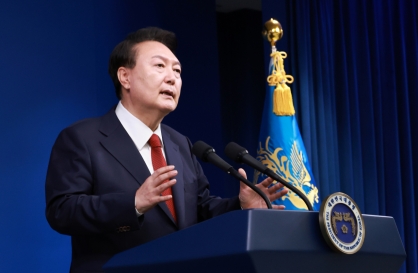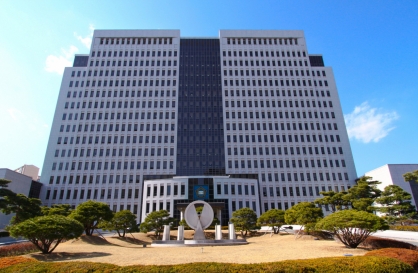It being the feast of Saint Valentine, today (Feb. 14) is a favored moment to give or receive that ultimate lovers’ gift: a diamond. This year, however, isn’t a good one for those who want to know for sure that the stone’s origins are above reproach.
That’s because the Kimberley Process Certification Scheme, the international regime designed to disconnect human suffering from the rough-diamond supply chain, is losing its sparkle. As the chairman of the process for 2012, the U.S. is positioned to lead vital reforms. Given the scope of the needed changes and the short time frame in which to enact them, the U.S. needs to move with dispatch.
Started in 2003 through the United Nations, the Kimberley Process requires that the 76 participating countries ― including all the major diamond traders ― establish a system to eliminate the presence of conflict diamonds from shipments into or out of their territory. Members agree to trade only with one another. Kimberley Process certification allows exporters to sell legitimately and thus for top dollar.
The worst manifestation of the weakness of the scheme is in Zimbabwe. In 2008, the government deployed soldiers to seize the massive, newly discovered Marange diamond fields, killing more than 200 miners and forcing others, including children, to dig for gems. Zimbabwean authorities claim that the establishment since of four enterprises ― mining companies in joint ventures with the government ― has regularized operations in Marange. But security guards still attack local miners to drive them off, preserving the area’s riches for the government’s chosen few.
Because of these outrages, the Kimberley Process singled out Marange gems for scrutiny in the late 2000s. But last year, the program reinstituted Zimbabwe’s right to issue certificates for them. At the time, the process was led by the Democratic Republic of the Congo, whose army has also been implicated in illegal mining of gold and other metals. Backed by other African producers, the DRC took the position that the Kimberley rules did not cover human-rights abuses like those in Marange.
Unfortunately, it had a point. The Kimberley Process was originally a response to wars in such places as Sierra Leone and Angola in which rebels funded their efforts by mining and selling rough diamonds. That revenue prolonged conflicts, adding to the suffering of civilians. The certification process thus focused on requiring that diamonds finance no entity seeking to overthrow a legitimate government.
Today, the only gems denied Kimberley certificates because of their designation as conflict diamonds are those from Ivory Coast, where until recently rebels used them as a source of financing. Yet the intent of the Kimberley Process ― to ensure the diamond trade doesn’t harm ordinary people ― is being violated in Zimbabwe. Whether the people of Marange are being abused by insurgents or by soldiers, or by ex-soldiers working as guards for the government’s joint ventures, doesn’t change the fact of their suffering.
That abuse should be what matters to purchasers of polished diamonds, who count on the Kimberley Process to keep tainted stones out of legitimate markets. For Kimberley certification to live up to its original intent, it needs to prohibit not just diamonds that fund rebellions but also those that owe their provenance to abuse of human rights. Drawing on accepted global norms and the work of monitoring groups such as Human Rights Watch and Global Witness, the Kimberley Process needs to put such prohibitions into place.
The U.S. is well-placed to spearhead such a reform. The U.S. alone makes up 38 percent of the polished-diamond market, which boomed last year, judging by the 26 percent increase in total 2011 sales reported by industry leader De Beers. Updating the terms of reference will take considerable leadership, because the Kimberley Process works on the basis of consensus, which has been interpreted to mean unanimity. That, too, needs revising. A simple majority of voting members present should suffice for normal decisions, with 75 percent required for a change in the charter.
The time for action is short. In 11 months, South Africa will assume the leadership of the process. Although South Africa has agreed with the U.S. in principle to a two-year reform strategy, as a rough-diamond producer it faces a different array of pressures that could end up watering down proposed changes.
On Feb. 3, Gillian Milovanovic, the new U.S. chairwoman of the Kimberley Process, conducted a news conference by telephone. A French-speaking diplomat who’s worked in Mali, Botswana and South Africa, she’s impressed reform advocates with her resolve and spoke on the call of an “ambitious” U.S. agenda. Yet she was poorly equipped to field reporters’ questions, saying she was not “sufficiently familiar” with the Marange issue to address it. Milovanovic will have to pick up the pace to achieve the ambitious reform necessary to ensure diamonds, a token of love exchanged between two people, aren’t procured at the expense of others.
(Bloomberg)
That’s because the Kimberley Process Certification Scheme, the international regime designed to disconnect human suffering from the rough-diamond supply chain, is losing its sparkle. As the chairman of the process for 2012, the U.S. is positioned to lead vital reforms. Given the scope of the needed changes and the short time frame in which to enact them, the U.S. needs to move with dispatch.
Started in 2003 through the United Nations, the Kimberley Process requires that the 76 participating countries ― including all the major diamond traders ― establish a system to eliminate the presence of conflict diamonds from shipments into or out of their territory. Members agree to trade only with one another. Kimberley Process certification allows exporters to sell legitimately and thus for top dollar.
The worst manifestation of the weakness of the scheme is in Zimbabwe. In 2008, the government deployed soldiers to seize the massive, newly discovered Marange diamond fields, killing more than 200 miners and forcing others, including children, to dig for gems. Zimbabwean authorities claim that the establishment since of four enterprises ― mining companies in joint ventures with the government ― has regularized operations in Marange. But security guards still attack local miners to drive them off, preserving the area’s riches for the government’s chosen few.
Because of these outrages, the Kimberley Process singled out Marange gems for scrutiny in the late 2000s. But last year, the program reinstituted Zimbabwe’s right to issue certificates for them. At the time, the process was led by the Democratic Republic of the Congo, whose army has also been implicated in illegal mining of gold and other metals. Backed by other African producers, the DRC took the position that the Kimberley rules did not cover human-rights abuses like those in Marange.
Unfortunately, it had a point. The Kimberley Process was originally a response to wars in such places as Sierra Leone and Angola in which rebels funded their efforts by mining and selling rough diamonds. That revenue prolonged conflicts, adding to the suffering of civilians. The certification process thus focused on requiring that diamonds finance no entity seeking to overthrow a legitimate government.
Today, the only gems denied Kimberley certificates because of their designation as conflict diamonds are those from Ivory Coast, where until recently rebels used them as a source of financing. Yet the intent of the Kimberley Process ― to ensure the diamond trade doesn’t harm ordinary people ― is being violated in Zimbabwe. Whether the people of Marange are being abused by insurgents or by soldiers, or by ex-soldiers working as guards for the government’s joint ventures, doesn’t change the fact of their suffering.
That abuse should be what matters to purchasers of polished diamonds, who count on the Kimberley Process to keep tainted stones out of legitimate markets. For Kimberley certification to live up to its original intent, it needs to prohibit not just diamonds that fund rebellions but also those that owe their provenance to abuse of human rights. Drawing on accepted global norms and the work of monitoring groups such as Human Rights Watch and Global Witness, the Kimberley Process needs to put such prohibitions into place.
The U.S. is well-placed to spearhead such a reform. The U.S. alone makes up 38 percent of the polished-diamond market, which boomed last year, judging by the 26 percent increase in total 2011 sales reported by industry leader De Beers. Updating the terms of reference will take considerable leadership, because the Kimberley Process works on the basis of consensus, which has been interpreted to mean unanimity. That, too, needs revising. A simple majority of voting members present should suffice for normal decisions, with 75 percent required for a change in the charter.
The time for action is short. In 11 months, South Africa will assume the leadership of the process. Although South Africa has agreed with the U.S. in principle to a two-year reform strategy, as a rough-diamond producer it faces a different array of pressures that could end up watering down proposed changes.
On Feb. 3, Gillian Milovanovic, the new U.S. chairwoman of the Kimberley Process, conducted a news conference by telephone. A French-speaking diplomat who’s worked in Mali, Botswana and South Africa, she’s impressed reform advocates with her resolve and spoke on the call of an “ambitious” U.S. agenda. Yet she was poorly equipped to field reporters’ questions, saying she was not “sufficiently familiar” with the Marange issue to address it. Milovanovic will have to pick up the pace to achieve the ambitious reform necessary to ensure diamonds, a token of love exchanged between two people, aren’t procured at the expense of others.
(Bloomberg)





![[K-pop’s dilemma] Can K-pop break free from ‘fandom’ model?](http://res.heraldm.com/phpwas/restmb_idxmake.php?idx=644&simg=/content/image/2024/05/09/20240509050541_0.jpg&u=20240509173751)




![[News Analysis] Yoon's first 2 years marked by intense confrontations, lack of leadership](http://res.heraldm.com/phpwas/restmb_idxmake.php?idx=644&simg=/content/image/2024/05/09/20240509050612_0.jpg&u=20240509233252)







![[Today’s K-pop] NCT’s Mark to drop 1st solo album in February 2025](http://res.heraldm.com/phpwas/restmb_idxmake.php?idx=642&simg=/content/image/2024/05/10/20240510050597_0.jpg&u=)